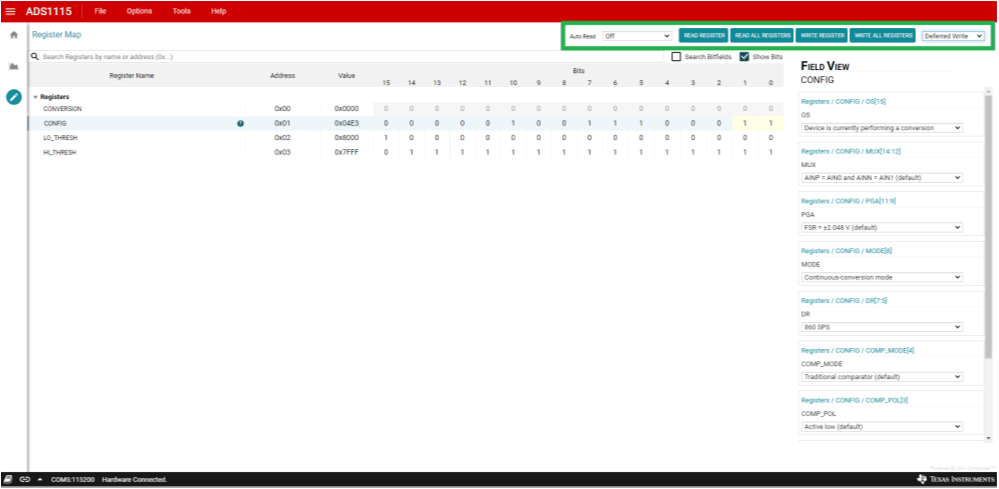SBAU362 March 2021 ADS1015 , ADS1115
5.2.3.1 Register Read and Write Options
At the top and right side of the Register Map window (as shown in Figure 5-23) are controls for reading and writing the registers. The startup default control values are to Immediately Write the Config register when options change. The Auto Read register function is turned off.
 Figure 5-23 Register Read and Write Controls
Figure 5-23 Register Read and Write Controls